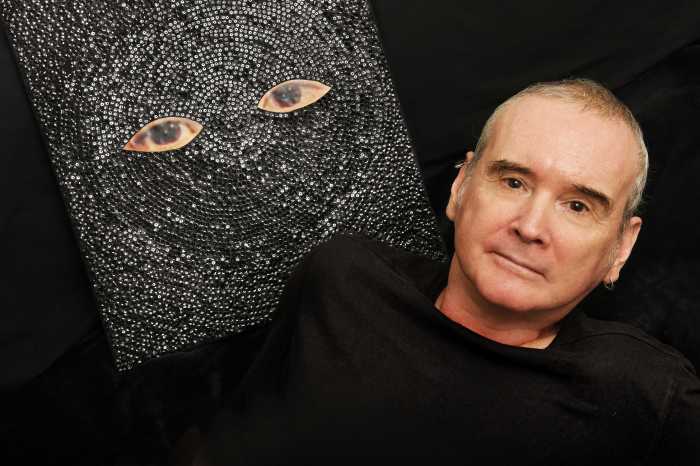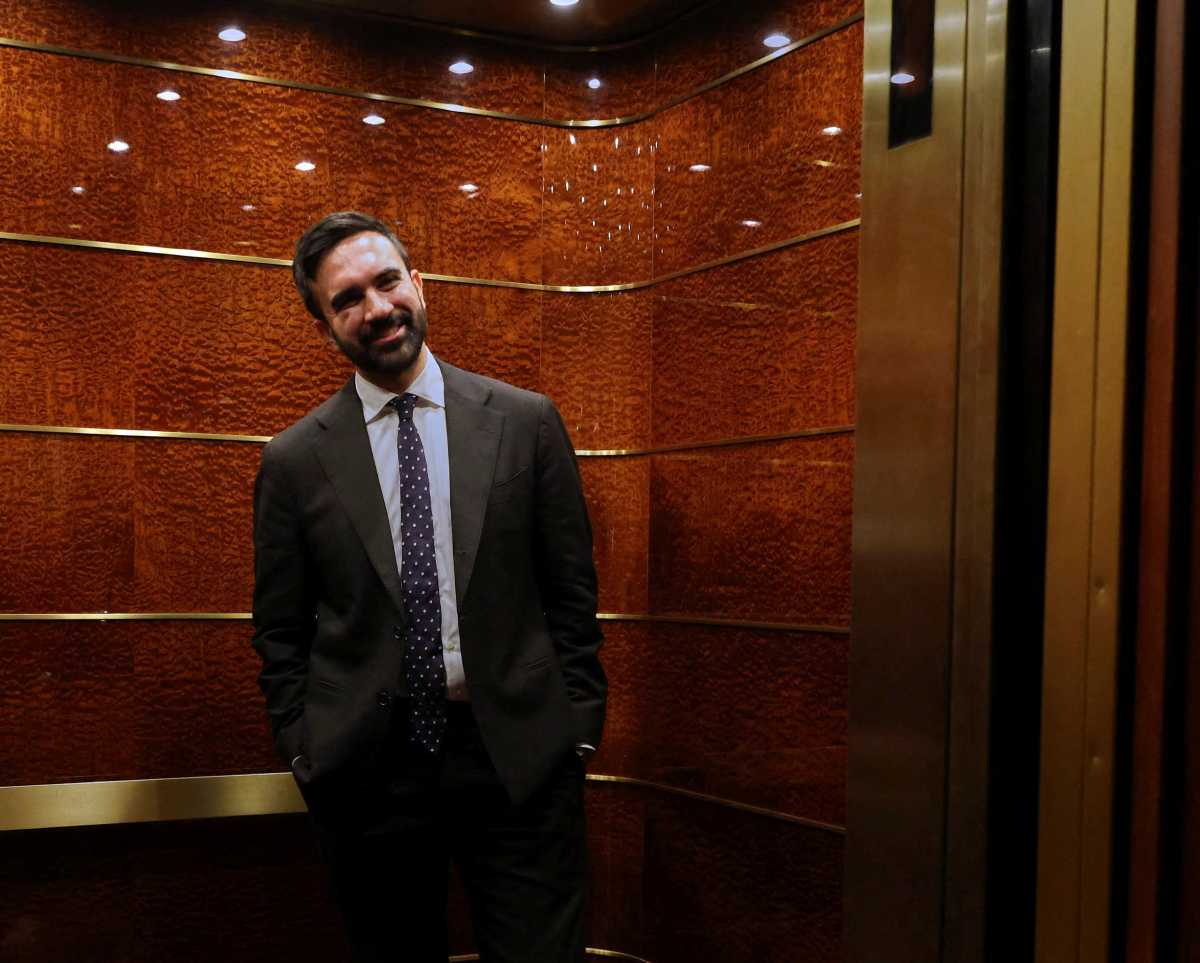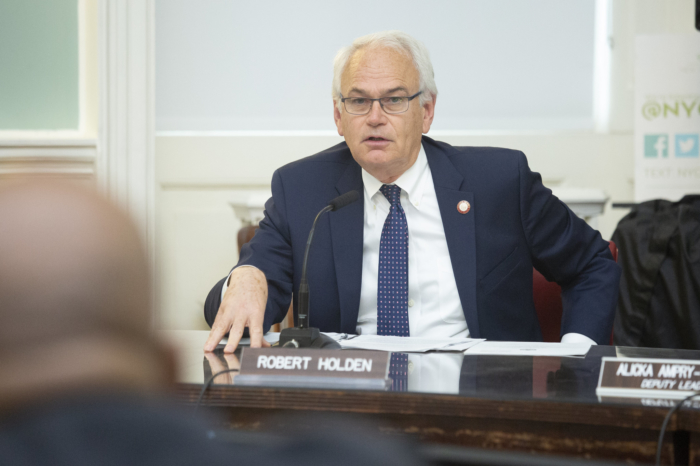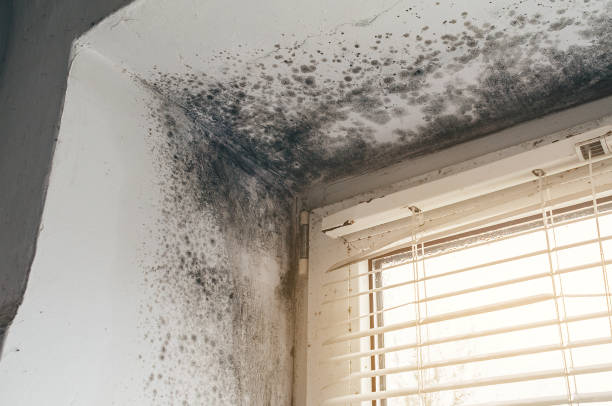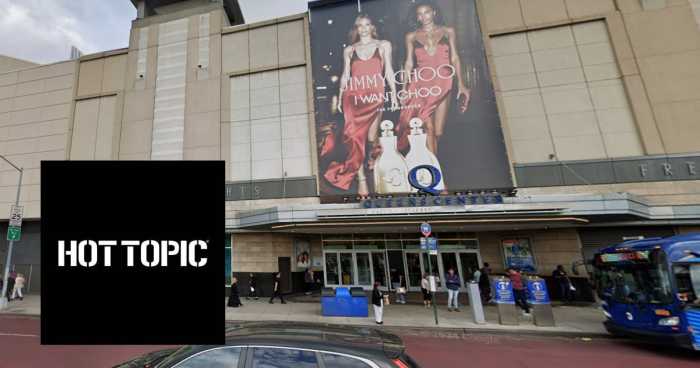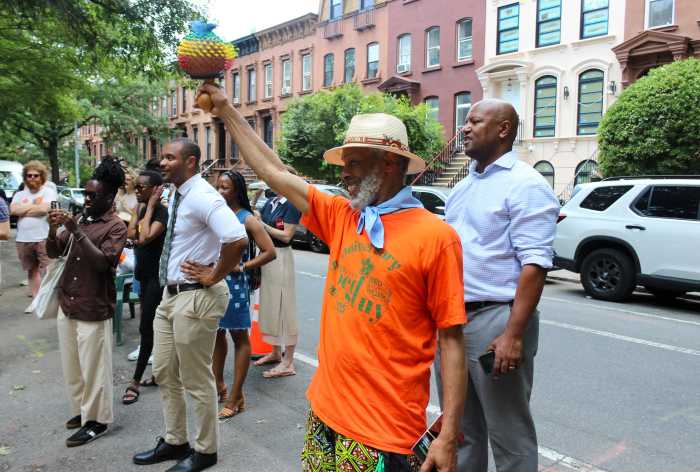By Patrick Hedlund
Trump back to work
Construction is moving forward at the Trump Soho condo-hotel on Spring St. after the lifting of a partial stop-work order that had been enforced at the site following a series of incidents earlier this year.
The 42-story project had previously been expected to be topped off by the end of 2007. But the death of a construction worker at the site in January of this year and a series of problems, including falling glass from the building, slowed progress throughout the year.
But with the stop-work order rescinded last month, work has been allowed to resume on the building’s uppermost floors, and the developers are expecting the project to be fully built and enclosed in glass by as early as next month.
“We’re going full-speed ahead, and our goal is catch up as much as possible,” said Julius Schwarz, executive vice president of the Bayrock Group, the project’s co-developer. “[Trump Soho contractor] Bovis has been very diligent with all safety precautions,” he added. “We’re very happy to be proceeding.” Schwarz said the building should be fully constructed and totally sheathed in glass by October, at the latest.
Department of Buildings spokesperson Kate Lindquist confirmed that the stop-work order, which was issued on Jan. 15 following the construction worker’s death, was removed on Aug. 22. In return for the order being lifted, the Buildings Department required Bovis to provide safety training for workers, weekly safety meetings on site and hire additional site-safety managers.
In the meantime, a lawsuit filed by the Soho Alliance will be heard on Friday in front of the State Supreme Court, as the neighborhood organization has charged D.O.B. and the Board of Standards and Appeals with “an arbitrary and capricious decision by a governmental agency” to let the project be built, said Alliance Director Sean Sweeney. The Article 78 lawsuit, filed after the B.S.A.’s May ruling in favor of Trump Soho, seeks to prove that D.O.B. erred when issuing a permit for the project last year, because the condo-hotel is residential and thus not permitted at the manufacturing-zoned location.
“We’re not concerned at all,” Schwarz commented of the suit, which is aimed this time at the city, rather than the developer. “We know that the law’s on our side, and that we’ve done everything in compliance with law,” he said.
Sales activity at the condo-hotel, which Schwarz said is more than half sold, has been spurred by an overseas push by the developers, including recent marketing efforts in Europe and the Middle East. He acknowledged that “most of the buyers are foreign,” fitting the profile of the nonpermanent resident stipulated by a restrictive declaration stating that no one may live in the building more than 29 days straight at a time.
L.E.S., the new Chelsea
A major Chelsea art gallery has decamped for the Lower East Side, where a burgeoning scene and more affordable rents have recently drawn new tenants to the Bowery.
The White Box, a nonprofit gallery that operated in West Chelsea for a decade, often featuring politically charged installations, has been outfitting its new space at 329 Broome St. near the Bowery for a planned September opening.
A recent visit by Mixed Use found gallery director Juan Puntes on hand overseeing the space’s all-white paint job in an effort to emulate his former W. 26th St. digs, where rents next year are expected to rise to two-and-a-half times what the White Box had been paying.
“It’s a phenomenon not much different from what made people from Soho move into this desolate area [Chelsea] with large spaces,” Puntes said of his decision to ditch rising rents in the “mega-gallery district” for the more up-and-coming Lower East Side. He noted that about 55 galleries now dot the Bowery and L.E.S. — up markedly from just a few months ago — compared to 400 in Chelsea.
The White Box will take over the Broome St. space’s first floor and half the basement after beating out higher bids from other galleries for the address, Puntes said.
He declined to comment on how much the gallery will be paying at the new location, but brokers said similar spaces nearby have been going in the $80-per-square-foot range.
The White Box’s move, however, appeared as much based on an ideological shift as it was economically driven, Puntes added.
“Part of my mission is going to be to bring about an echo of Downtown as it used to be at its best,” he said, noting the L.E.S.’s mix of old and new, from minorities living in tenement buildings to the Bowery’s history of restaurant suppliers. “We had art, music, film, video-makers. It was not door-to-door galleries or bars — just one here, another a few blocks away.”
Puntes forecast that about 150 to 200 galleries will eventually move to the L.E.S., but that they will ultimately be displaced by upscale residential and retail development.
“This neighborhood will change irrevocably,” he stated. “It’s a natural pattern we have in New York, constantly.”
mixeduse@communitymediallc.com






